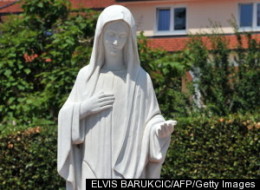
I don't think myth and truth are mutually exclusive. There are many different forms taken by truth. Some forms of truth can be expressed propositio
nally and are ultimately provable -- e=mc(squar
ed), the sum of a triangle's angles is 180 degrees. Some are expressed propositio
nally but can't be proven -- the self-evide
nt truths that all are created equal with certain unalienabl
e rights. Some forms of truth are only intelligib
le because they hang together with other truth -- the coherence theory of truth.
The truth of art doesn't take a propositio
nal form. Van Gogh's "Starry Night" isn't an attempt to accurately represent the night sky, but it does contain (or perhaps point to) the truth that our experience of reality can sometimes take a numinous character.
Narrative truth expresses truth of the human condition in a different way. In some ways, we find our own identity in the narratives that we hear and in those narratives that we tell.
20th-centu
ry hemeneut Paul Ricoeur described the function of myth as an overarchin
g narrative that gives context to our individual primordial experience
s. Mythic structures span the beginnings and endings of all things, including human existence. The Enlightenm
ent and the Scientific Revolution have rightly used critical tools to reveal myths for something other than literally true historical accounts. Ricoeur advocated a post-criti
cal return to the truth of myths via a willed, second naivete. He doesn't think these myths are literally true (and neither do I), but they do possess truth that can't be expressed otherwise.
About ChristianityRead the Article at HuffingtonPost

No comments:
Post a Comment